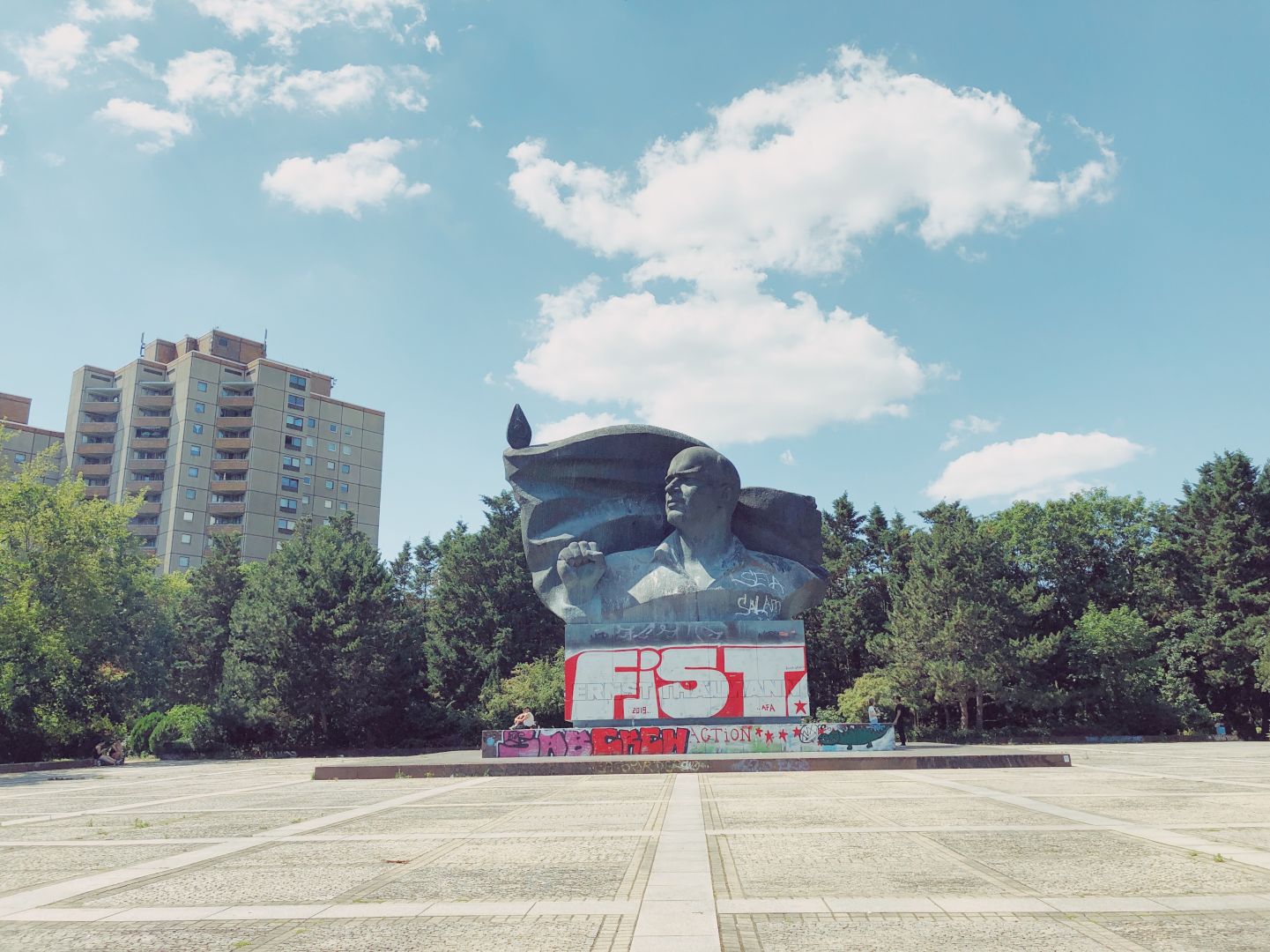
by DGR News Service | Jun 8, 2021 | Education
This article was originally published on the blog buildingarevolutionarymovement.org. Republished with permission.
Understanding political ideology is essential to then start thinking about theories of change, theories of power, revolutionary strategy and vision. We all have a political ideology, whether we realise it or not. Radicals refer to ideologies all the time but I think they are used vaguely without a clear frame of reference. I think it is important to have a shared understanding of concepts and words to avoid misunderstandings. I am the process of added a glossary page to the blog to help with this.
A key text for understanding political ideologies is Political Ideologies: An Introduction by Andrew Heywood (4th edition from 2007) which is where the content for these initial posts on ideology is referenced from. Although I don’t agree with Heywood’s take on everything, it is a good starting point for understanding the importance of political ideology and what the different ideologies are.
I think getting clear on political ideologies is essential, so we know which ideologies want to change society to make things better for everyone, and which ideologies are working against that, either to maintain the current power arrangements, or are actively trying to roll back gains and increase inequality further.
The term ideology was coined during the French Revolution, to refer to a new ‘science of ideas’. There is no agreed definition for the term and Heywood gives two reasons for this. First, concepts related to ideology link theory and practice, so the term represents highly contentious debates about the role of ideas in politics. What is the relationship between beliefs and theories, compared to material life or political conduct? The second is that the term ‘ideology’ has been used as a political weapon or device to criticize rival sets of ideas of belief systems.
Marxism and Ideology
Heywood explains that Karl Marx’s and later Marxist thinkers’ use of the term ‘ideology’ resulted in the importance of ideology in modern social and political thought. Marx had a very different understanding of the concept than is used in mainstream political analysis. Heywood lists four crucial features of Marx’s view of ideology. First, Marx believed that ideology presented a mystification and a false or mistaken view of the world, what Engels referred to as ‘false consciousness’. Marx classified his own ideas as scientific and truthful, compared to ideology and falsehood. Second, Marx linked ideology to the class system and the distortion implicit in ideology originates from the fact that it reflects the interests of the ruling class. Third, ideology conceals the contradictions of capitalism in society, that are disguised from the exploited proletariat, their own exploitation, which therefore maintain a system of unequal class power. Finally, Marx believed that ideology was a temporary phenomenon, that would only continue as long as the class system continues. The proletariat, in Marx’s view, are the ‘grave diggers’ of capitalism and will create a classless society with the collective ownership of wealth [1].
Heywood describes how Marx’s overly optimistic prediction of capitalism’s end interested later Marxists in the concept: ideology was seen as one of the reasons for the resilience of capitalism. This combined with an understanding that each social class were seen to have their own ideology. These were ideas that advanced the interests unrelated to the class position. Ideology was no longer implied falsehood and mystification, or stood in opposition to science.
For Heywood, ideology was developed furthest by Antonio Gramsci: “Gramsci argued that the capitalist class system is upheld not simply by unequal economic and political power, but by what he termed the ‘hegemony’ of bourgeois ideas and theories. Hegemony means leadership and domination and, in the sense of ideological hegemony, it refers to the capacity of bourgeois ideas to displace rival views and become, in effect, the common sense of the age.” Gramsci argued that ideology is embedded at every level through society, in its culture and language. Gramsci believed that bourgeois hegemony needed to be challenged at the political and intellectual level through the creation of ‘proletarian hegemony’ [2].
The Frankfurt School, a group of German neo-Marxists analysed that ability of capitalism to maintain stability by manufacturing legitimacy. Herbert Marcuse, argued that “advanced industrial society has developed a ‘totalitarian’ character in the capacity of its ideology to manipulate thought and deny expression to oppositional views.”[3]
Non-Marxist concepts of Ideology
A German sociologist Karl Mannheim attempted to develop a non-Marxist concept of ideology. Heywood describes how he agreed with Marx that people’s ideas are shaped by their social circumstances but did not view ideology in negative terms: “Mannheim portrayed ideologies as thought systems that serve to defend a particular social order, and that broadly express the interests of its dominant or ruling group. Utopias, on the other hand, are idealized representations of the future that imply the need for radical social change, invariably serving the interests of oppressed or subordinate groups.” Mannheim distinguished between ‘particular’ and ‘total’ ideologies: ‘particular’ are the ideas and beliefs of individuals, groups and parties, with ‘total’ ideologies representing ‘world views’ of a social class or society, such as liberal capitalism or Marxism [4].
For Heywood, in the 1950s and 1960s the term ‘ideology’ was used in a highly restrictive manner, to describe oppressive systems of rule such as fascism and communism in Fascist Italy, Nazi Germany and Stalinist Russia. These ideologies were seen to be ‘closed’ systems of thought, which claimed a monopoly of truth and refused to tolerate opposing ideas.
The conservative concept of ideology is based on a distrust of abstract principles and philosophies, due to a skeptical attitude towards rationalism and progress. The world is seen as too complex for the human mind to understand. Therefore, ideology is seen as dogmatic, with fixed or doctrinaire beliefs that are divorced from the complexities of the real world. Conservatives rejected ideology in favour of pragmatism, that looks to experience and history as the best guide to human behaviour. This changed with the hijacking of conservatism by the the highly ideological politics of the new right [5].
Defining Ideology
Since the 1960s the term ‘ideology’ has become a neutral and objective concept and can be viewed as an ‘action-oriented system of thought’. Disagreements have persisted over the social role and political significance of ideology. Heywood lists the following meanings that have been attached to ideology:
- a political belief system
- an action-orientated set of political ideas
- the ideas of the ruling class
- the world view of a particular social class or social group
- political ideas that embody or articulate class or social interests
- ideas that propagate false consciousness amongst the exploited or oppressed
- ideas that situate the individual within a social context and generate a sense of collective belonging
- an officially sanctioned set of ideas used to legitimize a political system or regime
- an all-embracing political doctrine that claims a monopoly of truth
- an abstract and highly systematic set of political ideas[6]
Heywood defines ideology to be understood as:
“An ideology is a more or less coherent set of ideas that provides the basis for organizing political action, whether this is intended to preserve, modify or overthrow the existing system of power. All ideologies therefore have the following feature:
- a) They offer an account of the existing order, usually in the form of a ‘world view’.
- b) They advance a model of a desired future, a vision of the ‘good society’.
- c) They explain how political change can should be brought about – how to get from (a) to (b).”
For Heywood this definition is “entirely in line with the social-scientific usage of the term.” And that this definition illustrates the complexity of ideology because it brings about two kinds of synthesis. The first fuses understanding and commitment, so ideology blurs the distinction between what ‘is’ and what ‘should be’. The second synthesis is the fusion of political thought/theory and political practice/action [7].
Heywood states that ideologies can be seen as ‘regimes of truth’, by providing “a language of political discourse, a set of assumptions and presuppositions about how society does and should work, ideology structures both what we think and how we act.” He links ideology to power: “in a world of competing truths, values and theories, ideologies seek to prioritize certain values over others, and to invest legitimacy in particular theories or sets of meanings.” Heywood sees ideologies as providing intellectual maps of the social world, that establish relationships between individuals and groups verses the larger structure of power. They therefore play an essential role in maintaining the current power structure as fair and natural, or in challenging it by highlighting its injustices and pointing out the benefits of alternative power structures [8].
Ideology and the Political Spectrum
Heywood explains that political ideology developed from the transition from feudalism to industrial capitalism. The earliest or ‘classical’ ideological traditions – liberalism, conservatism and socialism – developed as competing attempts to shape industrial society. During the nineteenth century, ideologies gained a clearer doctrinal character to become associated with a particular social class – liberalism for the middle class, conservatism for the aristocracy, and socialism for the working class. This resulted in political parties developing to represent the interests of these classes. The parties developed political programmes, resulting in a battle between two rival economic philosophies: capitalism and socialism. Political ideology therefore has a strong economic focus. This is described as the left/right divide and illustrated by the linear political spectrum.
Heywood describes how the terms ‘left’ and ‘right’, date back to the French Revolution and the seating arrangements adopted by the political groups at the first meeting of the Estates-General in 1789. Those that sat on the left supported equality and common ownership, and support for meritocracy and private ownership was on the right [9].
Left <—————————————————————————————> Right
Communism Socialism Liberalism Conservation Fascism
Classical and New Ideologies
Heywood lists the ‘classical’ ideologies to be: liberalism, conservatism, socialism, nationalism, anarchism, fascism, and the ‘new’ ideologies to be: feminism, green ideology, multiculturalism, islamism. He describes how the ‘new’ ideologies have roots that stretch back until the nineteenth century and have been given “particular areas of ideological debate a prominence they never previously enjoyed and, in the process, they have fostered the emergence of fresh and challenging ideological perspective.” [10]
Heywood lists three reasons why this process of ideological transformation has occurred. The first is the transition from industrial societies to postindustrial societies. He describes the shift from societies with clear class divisions to more affluent societies with more of a focus on issue and identity politics. He also a describes a shift from societies with ‘thick’ social bonds based on social class and nationality to postindustrial societies with ‘thinner’ and more fluid social bonds. This results in people having a less clear idea of who they are and where they stand on moral and social issues.
The second is the collapse of communism and the changing world order. He describes that since the collapse of communism in eastern Europe, nationalism and religious fundamentalism have been on the rise. He describes how the 9/11 attacks and resulting ‘war on terror’ show the “emergence of new ideological battle lines that, some believe, may define global politics in the twenty-first century.”
The third reason is globalization and transnationalism. Heywood describes how globalization has influenced the development of political ideologies in a number of ways: the collapse of communism, undermined political nationalism (although this trend is now being reversed), strengthened multiculturalism, the spread of capitalism economy has generated a range of oppositional forces such as the spread of religious fundamentalism and anti-globalization/anti-capitalist movements.
Heywood lists three broad ways that the ‘new’ ideologies differ from the ‘classical’ ideologies’. The first is that there has been a shift away from economics towards culture. Liberalism, conservatism and socialism were mainly concerned with economic organization, their “moral vision was grounded in a particular economic model.” The ‘new’ ideologies are more concerned with people’s values, beliefs and ways of life. Second, there has been a shift from social class to identity, resulting in political activism becoming more a lifestyle choice. Finally there has been a shift from universalism to particularism. Socialism and liberalism shared a belief that there is “a common core to human identity shared by people everywhere; the ‘new’ ideologies…stress the importance of factors such as gender, locality, culture and ethnicity. In that sense, they practise the ‘politics of difference’ rather than the politics of universal emancipation.” [11]
In the next post I will summarise the key aspects of the ‘classical’ ideologies, plus feminism. In a future post I will summarise the remaining ‘new’ ideologies.
Endnotes
[1] Political Ideologies : An Introduction by Andrew Heywood, 4th edition, 2007, page 6/7
[2] Heywood, Political Ideologies, page 7
[3] Heywood, Political Ideologies, page 8
[4] Heywood, Political Ideologies, page 8/9
[5] Heywood, Political Ideologies, page 10
[6] Heywood, Political Ideologies, page 5
[7] Heywood, Political Ideologies, page 11-13
[8] Heywood, Political Ideologies, page 15
[9] Heywood, Political Ideologies, page 16
[10] Heywood, Political Ideologies, page 18
[11] Heywood, Political Ideologies, page 18-21
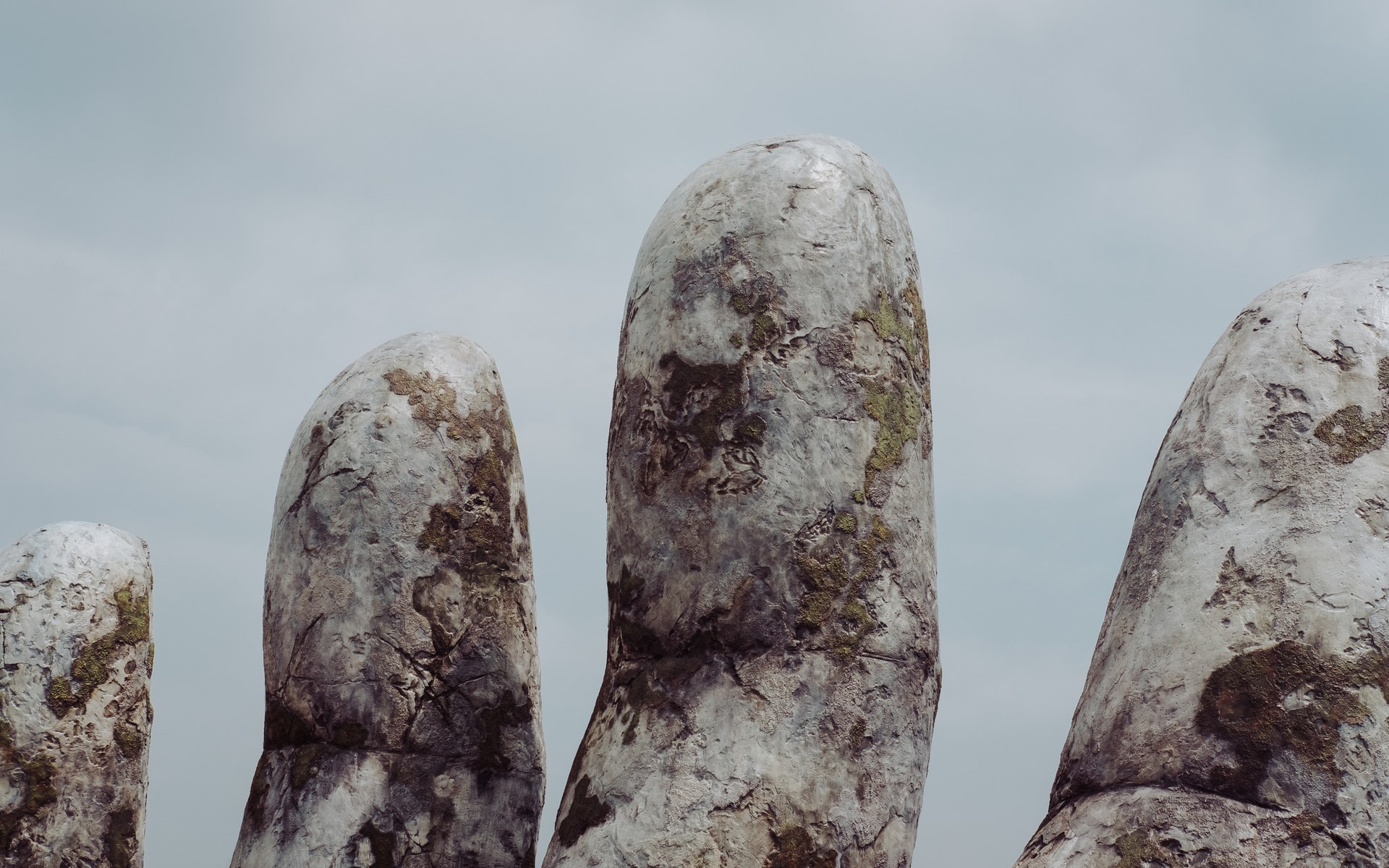
by DGR News Service | May 9, 2021 | Biodiversity & Habitat Destruction, Colonialism & Conquest, Education, Mining & Drilling, Strategy & Analysis, Toxification
By Straquez
The Colonial Years
Of course, Mexico has been in the front line of atrocities and destruction that come out of mining. Mexico is a land blessed with wide biodiversity that includes minerals that have caught the attention of foreign companies who then act as the machinery to do what this industrial culture does best –converting the living into the dead. High revenue for the company stakeholders, negative benefit for the inhabitants and nothing but endless destruction for the land.
It is said that Aztecs used to embellish and protect their bodies with jewelry, such as necklaces with charms and pedants, armlets, bracelets, leg bracelets, and rings. They would also use tools and vases fabricated with precious metals like gold and silver. These metals were found in deposits located on the surface and not underground like nowadays, this allowed the usage of such mineral resources without much effort or effect.
In 1521, Tenochtitlan, the Aztec capital, was taken over by the Spanish army consolidating Mexico’s Conquest. From then on, mining as an industry started in Mexico as Spaniards started to exploit places where mineral deposits could be located. Mining was carried out mostly in the North and Center of what is now modern day Mexico. Many important mineral deposits started to be discovered in places that later would become famous as they would generate wealth (for whom?) and human settlements. It was only a matter of time before the land subject to mining would be turned into cities such as Guanajuato, San Luis Potosi, Zacatecas, Taxco, Chihuahua and Durango.
Mines kept spreading and mining created many jobs and wealth (I hate to be repetitive, but whose wealth?). Is there even a mention of all the evils done to the indigenous land and people? Not at all, the history of mining is portrayed as progress, as an unquestionable good thing, as a victory and in no terms as a defeat or loss. The whole History of Civilization is pretty much like that, now that I think of it.
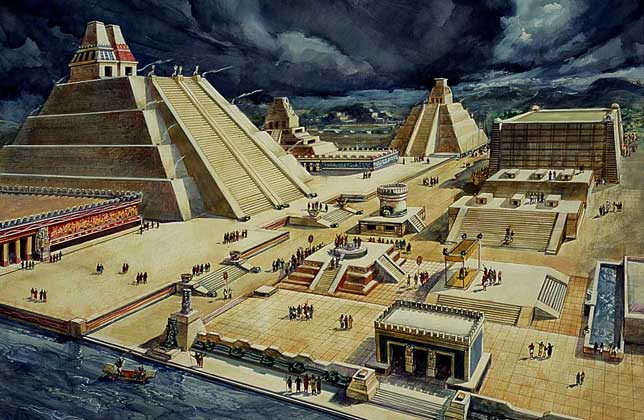
After Independence
When the Independence movement of Mexico started in 1810, mining projects were negatively affected and had to be stopped. It was not until 1823 when the movement ended that mining activity was restarted. Remember that I mentioned my surname Straffon being from Cornwall, England? Well, it was precisely during these years that the British Real del Monte Company was established thanks to English capital. This company provided both technology and workforce, some of it straight from Cornwall to re-establish silver mines located in Real del Monte, Hidalgo. 1,500 tons of equipment including 9 steam engines with their large boilers, 5 for pumping, 2 for crushing ore and 2 for use in powering saw mills; various pumps; large cast iron pipes to connect the pumps to be placed at the bottom of the mines with the surface. And so started the rebuilding and modernization of the district’s mining industry. The Cornish miners had brought the Industrial Revolution to Mexico.
By the beginning of the 20th century, Mexico was entering a major political transformation as new laws and codes were created. During Porfirio Diaz’ administration, for example, most of the railroad infrastructure was built all through the country, focusing on the main mining centers that were already established. Then the American corporations showed up offering the means for better extraction as mines during the times of Nueva España were certainly used, but could not be exploited to their maximum because Spain lacked the technology and resources to do so.
The Fresnillo Company, Mazapil Cooper Co., Peñoles Mining Co., and Pittsburg & Mexico Tin Mining Co. were some of the companies looking to make a profit out of Mexico’s mines. Parallel industries started to rise, the economy diversified and the country’s elite dreamed of Mexico being on its way to becoming a world economy. Metallurgical processes were improved with maximum return on capital and mineral processing efficiency as the main goal. The bonanza would cease somewhat in the 1960s when the mining industry was nationalized and mine administration passed to the charge of Mexican professionals.
Then came NAFTA, and in 1992 mining laws were modified substantially in order to accommodate the demands of big national and transnational corporations. Compared to the prior 300 years, production of gold and silver doubled even though several communities resisted the exploitation. Social and environmental damage increased substantially as a consequence due to legal impunity and the ability of the mining organizations to trample over human rights. The Mexican Mining Law of 1992 is a unique and unconstitutional piece of legislation, and rides roughshod over earlier laws which allowed for judicial challenges and which consequently made it difficult for companies to carry on their business with impunity. The solution of the mining organizations was, of course, to create a whole web of corruption that extends to the three branches of government. We are still living the influence of NAFTA until this very day. Business as usual.
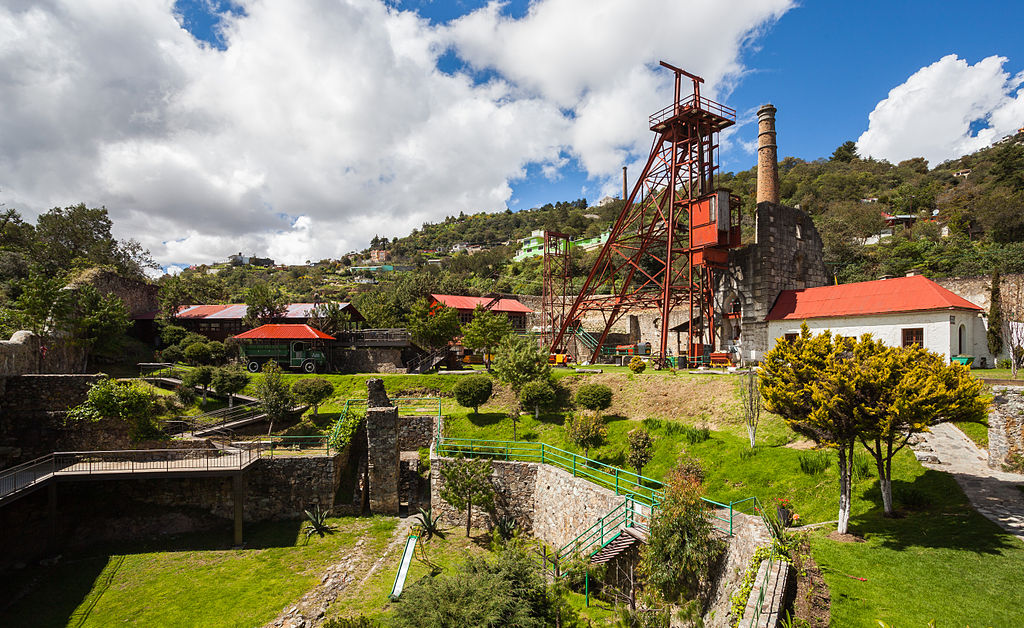
Keep on Digging
Doctor María Teresa Sánchez Salazar has set out very interesting mine “conflict maps” which consider many parameters including land conflict, environmental conflict, social conflict, labor conflict or a combination of those factors. Data shows that 75% of these conflicts have to do with land, that is, land grabs by the mining companies or due to environmental conflicts, and almost 70% of them happen in open-pit mines. Another interesting number – 60% of the conflicts have involved foreign company owned mines.
She adds that there are places where conflict started due to land grab and the subsequent leasing to mining companies and the implementation of ways to displace people from their native lands. Of a total of 181 natural areas, 57 have been leased for mining. Eight of them focus more than 75% of the surface to this activity. Twenty of them have at least 93% of their surface leased. One example is the Rayón National Park in Michoacan, its land is practically 100% leased for mining as well as Huautla Mountain Range that is between Morelos, Puebla and Guerrero.
Safety is also an issue for the Mexican mining sector. There are powerful cartels that have quite an influence in the entire country, including mining states such as Sonora, Chihuahua, Sinaloa and Guerrero. Mines have been object of many armed robberies that have increased during the COVID-19 pandemic. Extortion, threats and employee kidnapping have been the most common crimes reported by the mining companies.
If this was a Robin Hood kind of deal then I should certainly support it, but in the end workers are the most affected, operations are seldom slowed down and the exploitation just does not stop. If the criminal gangs were to take over, not much would change as, let’s be honest, both companies and cartels pretty much operate the same way but at a different scale.
Bacadéhuachi
In times prior to the year 1600, this area was inhabited by Opata indigenous settlements. In the year 1645 a mission named San Luis Gonzága de Bacadéhuachi was founded by the Jesuit missionary Cristóbal García. Its current inhabitants dedicate their lives to taking care of livestock and making cheese, bread and tortillas which are sold among themselves; within the world economy, they don’t have much of a choice. Being only 270 kilometers away from Hermosillo, capital of the State of Sonora, the road takes 5 hours to transit due to the uneven and complex terrain that in turn makes it a dangerous travel.
This town is on the same route of the high mountain range that takes you to Chihuahua, its neighbor state. This is a high-risk road as armed conflicts are constantly raging between groups that are looking to take control of this area. Some months ago, armed men went into the municipality creating such a situation and ending the peaceful environment to the point that the Mexican National Guard and the State Police now have to be constantly present.
Bacadehuachi has around 500 houses, most of them made of adobe, occupied by around 1,083 people according to the The National Institute of Statistics and Geography (INEGI). It has cobblestone roads and few are made of concrete due to the minimal vehicle transit. It is more common to see people on horses or donkeys than in motor vehicles. Everything is around the corner, there are no gas stations nearby. It has 3 municipal police officers that issue around 10 different fines a year. There is only one health center for basic checkups and a doctor is available every 3 days.
Regarding education, only one preschool, one primary school and one secondary school exist. For those who want to receive higher education, their only choice is to go to Granados, a municipality 50 kilometers away from the town. The road is risky to say the least, young students must stay at the neighboring town and go back to their families at the weekends in a municipality sponsored bus. To go to college is a victory, a luxury, a rare occurrence for the townspeople.
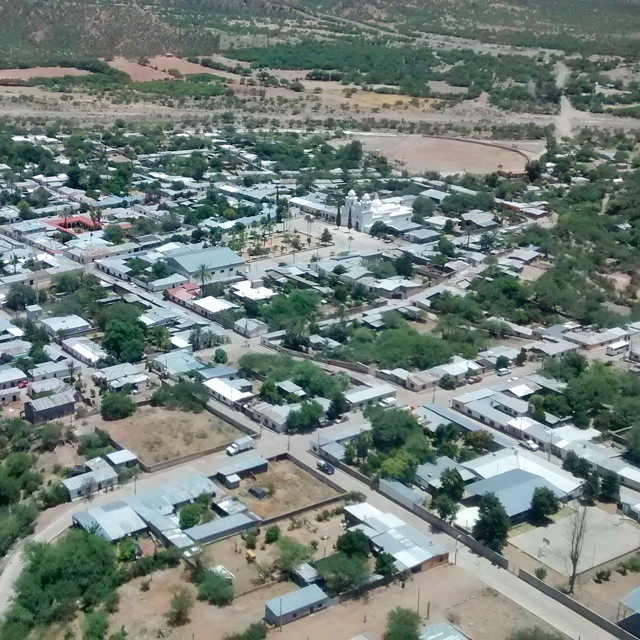
Don’t Know What I’m Selling
Miguel Teran is a farmer and former owner of La Ventana ranch. He sold his land to Bacanora Lithium for the Sonora Lithium Project. He asserts that the first explorations started back in 1994. Geologists came to the La Ventana ranch in government cars. They took some soil samples, came back 8 years later, measured the land and after that they never came back. Ten years ago, Bacanora Lithium carried out some studies. They drilled around 115 holes with the permission of Miguel and then they offered to buy the land.
I told them: you know what you’re buying, but I don’t know what I’m selling. Don’t take advantage of me. That’s how the negotiation started, but they wanted to pay as if it was a mere piece of land.”
Miguel wasn’t disappointed yet he acknowledges that he could have made a better deal as he has since found out what treasure lies in the 1,900 hectares that were sold and integrated into the Sonora Lithium Project. For the time being and until the mineral is extracted, Miguel may allow his cows to graze there as stipulated in the contract.
I am within my rights until I get in the way, but I have already bought some land.” Finally, he adds, “sometimes my car battery would fail and they would tell me that I had lithium here, but I only know about horses and chickens; not lithium.”

The Trauma of Our Technological Selves
As a city-dweller, my experience with Nature has been for the most part parks and decorative gardens. Since I live so disconnected from the land itself, I can only enter into relationship with my own species, our creations and the animals we call pets. For a long time I’ve been scared of insects and even though working in a garden has helped diminish the feeling, I still feel uncomfortable in certain scenarios. Soil and its minerals are even weirder to me, because I had never considered them something other than a resource, a component that can be used for my benefit through technology. They don’t seem alive, they don’t seem to have any other purpose than sitting there for us to transform them into something else.
Perhaps my biggest realization during my journey to connect with the land is the enormous damage that Capitalism, Colonialism and Industrialism have inflicted on the planet. It has reached the point that we are also physically, psychologically, emotionally and spiritually bent and broken enough for us to barely notice the indifference and violence around us. Indifference and violence done to each other and to ourselves. And yet, those who notice don’t always take action. Even less, those who know and take action don’t have a clear idea, much less a strategy to stop the abuse.
This is not something that modern technology can fix. Not the electric cars, not the solar cells nor the electric batteries. Not the tote bags and the bamboo toothbrushes that you can use as compost. Our home is being gutted and we just stand there watching, unsure on what to do. When you actually want to stop a killer, you go ahead and do it. You don’t offer knives from recycled metal or whips made out of hemp. You go ahead and put an end to the abuse by neutralizing any capacity to inflict damage that the perpetrator might have. You stop the killing, you stop the behavior, you commit yourself to do so.
Today I read that only 3% of world’s ecosystems remain intact. Civilization is going down regardless of what we do. Nothing can grow indefinitely without collapsing. The real question is what will be left when our civilization goes down. Our struggle resides in stopping it before there is nothing left.
Cristopher Straffon Marquez a.k.a. Straquez is a theater actor and language teacher currently residing in Tijuana, Baja California, Mexico. Artist by chance and educator by conviction, Straquez was part of the Zeitgeist Movement and Occupy Tijuana Movement growing disappointed by good intentions misled through dubious actions. He then focused on his art and craft as well as briefly participating with The Living Theatre until he stumbled upon Derrick Jensen’s Endgame and consequently with the Deep Green Resistance: Strategy to Save the Planet both changing his mind, heart and soul. Since then, reconnecting with the land, decolonizing the mind and fighting for a living planet have become his goals.
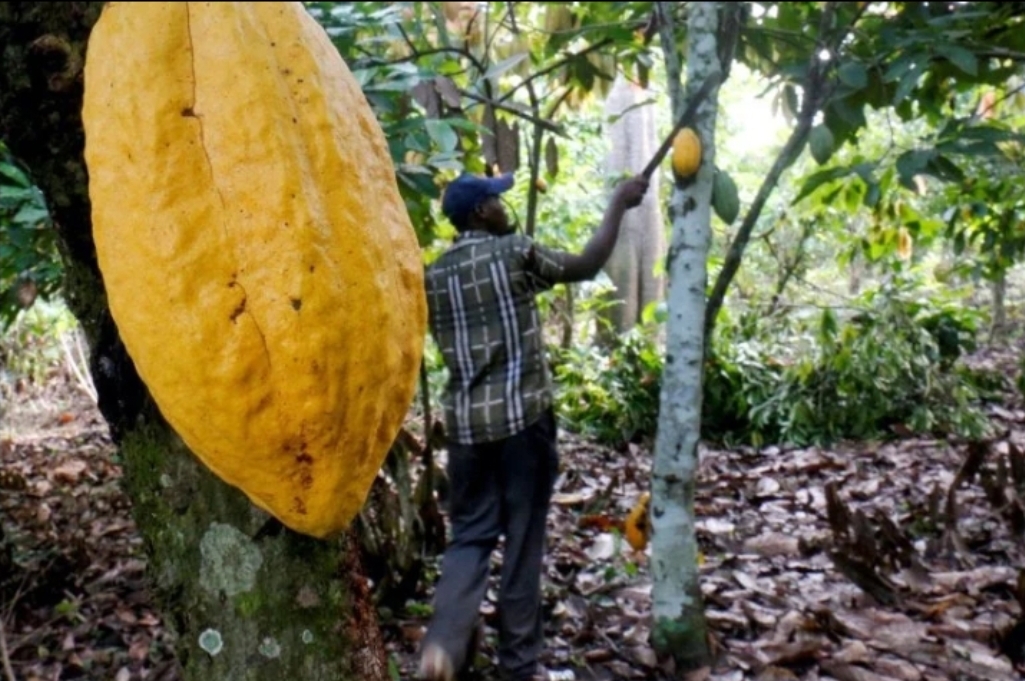
by DGR News Service | Jan 25, 2021 | Agriculture, Biodiversity & Habitat Destruction, Colonialism & Conquest, People of Color & Anti-racism
In the following piece, Mark relates the population growth to patriarchy, exploitation, and capitalism.
Editor’s note: DGR does not agree with all opinions on this article.
by Mark Behrend
The population of Africa is soaring.
Since 1950, it has grown from 227 million to 1.343 billion — an increase of 590%. Over the same period, South America has grown by 425%, Asia by 330%, and North and Central America by 250%, while Europe has only grown by 35%.
There are many reasons for the disparity, though the basic factors are development, wealth, and education. With development, infant mortality generally goes down and life expectancy increases, driving population up. Development tends to increase prosperity, education, and opportunities, gradually bringing population growth to a halt. Under normal development patterns, this results in a huge population increase when an economy is fueled largely by primary industries. Population growth slows as the economy moves into secondary industries, and levels off in a tertiary economy, where wealth is amassed, service industries emerge, and domestic businesses expand into foreign markets. That’s the upside of industrialization.
The downside is that both sides of this growth curve devastate the natural world.
With an exponential increase in the consumption and depletion of natural resources, degradation of air, land, and water, an ultimately fatal attack on biodiversity, and the exploitation of cultures on the back end of the development curve. Rooted in colonialism, the immediate threat to Africa’s people is that most of the benefits of development are going to European, American, and Chinese corporations. This does not appear likely to change. According to U.N. estimates, populations in North America, Europe, and Southeast Asia are expected to stabilize by 2100, while Africa’s is expected to triple.
Due to a variety of factors, including government inaction, corruption, and poor educational opportunities, birth rates remain high. To state it simply, unschooled girls and women have few options in life but to marry young and have four or more children. Ignorance can lead to the persistence of superstitions and regressive cultural practices, such as female genital mutilation, and beliefs that contraception causes promiscuity, infertility, and various health problems.
A recent news story reported that 10% of girls in Senegal are still subjected to female genital mutilation.
The practice remains common on much of the continent. A Senegalese activist said it continues, mostly among the poor and uneducated, who are afraid to defy old customs. He noted that victims often experience a high rate of lasting pain, along with a much higher than normal incidence of menstrual problems. A woman in favor of FGM, however, disagreed and said.
“If women are having problems, it’s because of contraception.”
The more obvious problem with contraception in Africa is that it is rarely used. The population of Senegal jumped from 2.4 million in 1950 to 16.3 million in 2018 — an increase of 675% in 68 years. On average, that’s the equivalent of adding 10% of a country’s current population every year, in perpetuity. The country with the greatest population growth, however, is Ivory Coast, with an astounding 978% increase over a similar period (2.6 million to 25.7 million, between 1950 and 2018). This can be linked directly to corporate exploitation, as the numbers clearly show.
Since independence in 1960, foreign corporations have virtually transformed Ivory Coast into one giant cocoa plantation, to feed the developed world’s voracious demand for chocolate. In 2019, the world cocoa market was worth over $44 billion, and is projected to top $61 billion by 2027. Along the way, Ivory Coast has become the world’s largest producer, with an estimated 38% of global production. In the process, however, 90% of the country’s forests have been sacrificed, and the illusion of economic growth has driven an unprecedented explosion in the Ivorian census.
Several foreign corporations are responsible for this, the principal offenders being Olam International (Singapore); Barry Callebaut (Switzerland); and the American companies Cargill, Nestle, Mars, and Hershey. They have much to be responsible for.
Capitalism’s guiding principle of creating an ever-growing demand at the lowest possible cost has led to more than rampant deforestation.
According to The Guardian an astounding 59 million children, aged five to 17, are working against their will in sub-Saharan Africa, mostly in agriculture. Due to the refusal of some agencies and governments to include family farms in forced labor statistics, however, estimates of the number of victims vary widely. Fortune Magazine, for instance , puts the number of child laborers in West Africa at “only” 2.1 million. Additional data from the U.S. Department of Labor indicate that over a million children under the age of 12 work in the cocoa industry in Ivory Coast and Ghana, which together produce more than two-thirds of the world’s supply.
Thousands are recruited from even poorer African countries, often with promises of good jobs and free education. Instead, they become victims of what is arguably the world’s largest human trafficking and slavery network. Even those working on family farms are often kept out of school to work in hazardous conditions, with 95% of them reportedly exposed to pesticides, and at risk of injury from using machetes and carrying heavy loads.
Pressured by organized boycotts by Europeans and Americans, the industry pledged in 2001 to reduce child labor 70% by 2020.
Instead, a new report says that since 2010, the number of West African children engaged in forced labor has increased from 31% to 45% of the total childhood population. The reason, again, is the basic mechanism of capitalism. Industry influences consumers to demand more, by producing more and advertising it at a lower price — thus enabling corporations to pay farmers even less. As a result, wholesale prices for cocoa have been cut in half since the 1970s. This has been achieved by paying West African farmers between $.50 and $.84 a day, while the World Bank’s poverty line is $1.90. Hence the 60% rise in cocoa production since 2010, the 45% jump in child labor, and the accelerated pace of deforestation. Farmers are compelled to produce more, just to make the same money they used to make for producing less.
The cocoa industry explains this by saying that it decentralized production (i.e., encouraged family farming rather than corporate plantations) to hold down costs. So, now it can’t meet its child labor goals, because family farms can’t be regulated like factory farms. Corporations call this good economics, while a neutral observer might call it legalized slavery.
A 2019 study, reported by The Guardian, says research indicates that the best way to end child labor is by educating girls and empowering women, in what remain highly patriarchal societies.
There are 18 steps in preparing cocoa for the wholesale market, and women and girls perform 15 of them. This is typical of labor patterns in much of the developing world. And it goes a long way toward explaining the poverty, overpopulation, and environmental destruction that plague the “Third World” — and, by extension, the planet as a whole. In Ivory Coast, the production demands and poverty forced on local communities has also forced roughly a million people to seek their livelihoods by illegally deforesting and farming in national forests and national parks. Recent surveys found that in 13 of 23 of these so-called “protected areas,” once thriving populations of chimpanzees and forest elephants have been totally eliminated.
At the current rate, Ivory Coast’s irreplaceable flora and fauna will soon be gone, along with a carbon sink half the size of Texas. Similar scenarios are playing out across Africa, as global agribusiness becomes more invested in African lands. Incredibly, the Ivorian government’s response has been to pass a law that would effectively put the nation’s forestry protection under corporate control for the next 24 years. The argument behind this fox-guarding-the-henhouse policy is that corporations see the “big picture,” while local farmers only see their own immediate needs. The policy would expel those one million illegal farmers from public lands, with no assistance or other apparent options, apart from migration, starvation, or lives of crime.
Such is the grim reality of corporate resource extraction in nations that were European colonies less than a century ago, and today have become virtual colonies of E.U., U.S., and Chinese business. China now has a huge and ever-growing footprint, both in East Africa and in Latin America. On the surface, Beijing paints this as a “win-win” relationship, with China building “free” infrastructure, and bringing big business to the boondocks.
The reality, however, is a far different story — with pipelines and powerplants crossing the Serengeti, a superhighway across fragile Amazon headwaters, and a rival to the Panama Canal on its way to completion, in Central America’s most environmentally sensitive wetlands. And if supposedly accountable corporations in Western democracies can’t stop child labor in West Africa, what are we to expect from a secretive dictatorship like China?
Who will feed Africa as its population doubles and triples, with much of the farmland now leased to Chinese agribusiness?
How long can Africa’s (or Indonesia’s, or Brazil’s) rich biodiversity survive, with their habitat reduced to a corporate commodity? Who would you pick to win a competition between gorillas, elephants, giraffes, and zebras, on the one hand, and global extraction industries, on the other?
As the monocrop cocoa farms of Ivory Coast become infertile and lose their productivity, the booming population will inevitably face growing poverty, and a very real threat of starvation. That isn’t the “corporate plan,” of course. The corporate plan, as one Ivorian farmer observed, is simply to make as much money as possible as fast as possible. And African farmers either play along, or the cocoa companies find those who will. The cycle thus compels Africans to make more babies to work the land, and then rape the land to feed the babies.
When it comes to Africa, ‘supply and demand’ is merely a sanitized term for ‘slash and burn’. Capitalism has no long-term plan for the continent, because the corporations are beholden to non-African investors back home. Their competitive edge is based on exceeding the year-end dividends of their rivals. From a business standpoint, the practical meaning of the profit motive is to use up the planet as fast as possible, and report it for tax purposes as normal depreciation.
Crazy as it sounds, the long-term plan of industrial civilization is simply to have a good short-term plan.
Corporations are all about the current fiscal year, just as democratic governments are all about the next election cycle. Sensible goals (relatively speaking) may be discussed and agreed to in forums like the Paris Climate Accords. But that all presumes a world working toward a common goal. When the negotiators get back home, however, they’re in a competitive race again. It’s nation against nation, corporation against corporation — the “real world” of year-end reports and election cycles, where those “sensible goals” they agreed to in principle are put off until next year. And “tomorrow,” as the song says, “never comes.”
Such are the economic realities that prompted the International Panel on Biodiversity and Ecosystem Services (IPBES) to project that by 2050, the world will face between 50 million and 700 million food refugees — a polite term for starving people, coming soon to a country near you. IPBES says the most likely number is between 200 and 300 million. At any rate, it will make Europe’s current crisis of African and Asian refugees (along with Latin American migrants fleeing to the United States) look like a picnic in the park, and today’s regional crisis will become tomorrow’s global disaster. Such is the future of corporate capitalism, where the rich plunder the resources of the poor, create a baby boom for cheap labor, and then — when there is no longer any profit in it — abandon both the people and the land.
The destruction can no longer be confined to the developing world.
This time the migrants will follow us home. Indirectly, their barren land will follow us, too — in the form of climate change, sea level rise, and the other unintended consequences of globalization, in what promises to be capitalism’s last century. There is simply nowhere left to run. As Chris Hedges describes it,
“It’s all Easter Island now.”
Returning to the education factor, population experts have long recognized the link between female education and employment opportunities on the one hand, and population stability on the other. Indeed, wherever women and girls have access to higher education, equal job opportunities, and the right to say “no” to having babies, population either stabilizes or decreases slightly.
For proof, one need only look to South Korea, where this otherwise positive formula is creating an economic problem of its own. Women there have achieved relative parity, in both education and employment. But with patriarchy persisting in the home, fewer than half of South Korean women now choose to marry, and the population is plunging.
In places like Senegal, on the other hand, “women’s liberation” is a largely meaningless phrase.
Only 63% of girls there so much as finish primary school, and less than half make it to high school. After all, what do corporate exploiters need with educated masses in the developing world? How could the plunder continue, if the plundered were taught why they’re being plundered, where their resources go, who reaps the profits, and what the developing world is getting in return?
Such are the hard truths behind industrial civilization. Insane as it sounds, increased population and planetary destruction are the inevitable consequences of “progress,” when sustainability and common sense argue for reducing population, minimizing technology and energy needs, replanting forests, and restoring the land. Corporate executives, of course, denounce such sustainable ethics as wild-eyed, radical nonsense. To their thinking, perpetual growth is the only way to avoid economic stagnation and collapse.
Super-techies like Elon Musk of SpaceX and Google’s Larry Page ignore the math, arguing that we can mine the asteroids, colonize Mars, feed a growing population with hydroponic agriculture, and produce endless clean energy and green jobs. (Former U.S. House Speaker Newt Gingrich went so far as to suggest human colonies on the moon. Gingrich apparently wasn’t aware that the moon has a monthly temperature swing of 540° Farenheit, due to its two-week-long days and nights, and total lack of an atmosphere. Mars, meanwhile, has a highly toxic atmosphere, and an average temperature of -67°. Minor details.)
Technological fantasies aside, these so-called leaders leave one question unanswered:
In what school of economics is it taught that when you knowingly and systematically destroy your home planet, you get another one to plunder for free? What part of “there is no Planet B” did they not understand?
Featured image: Al Jazeera
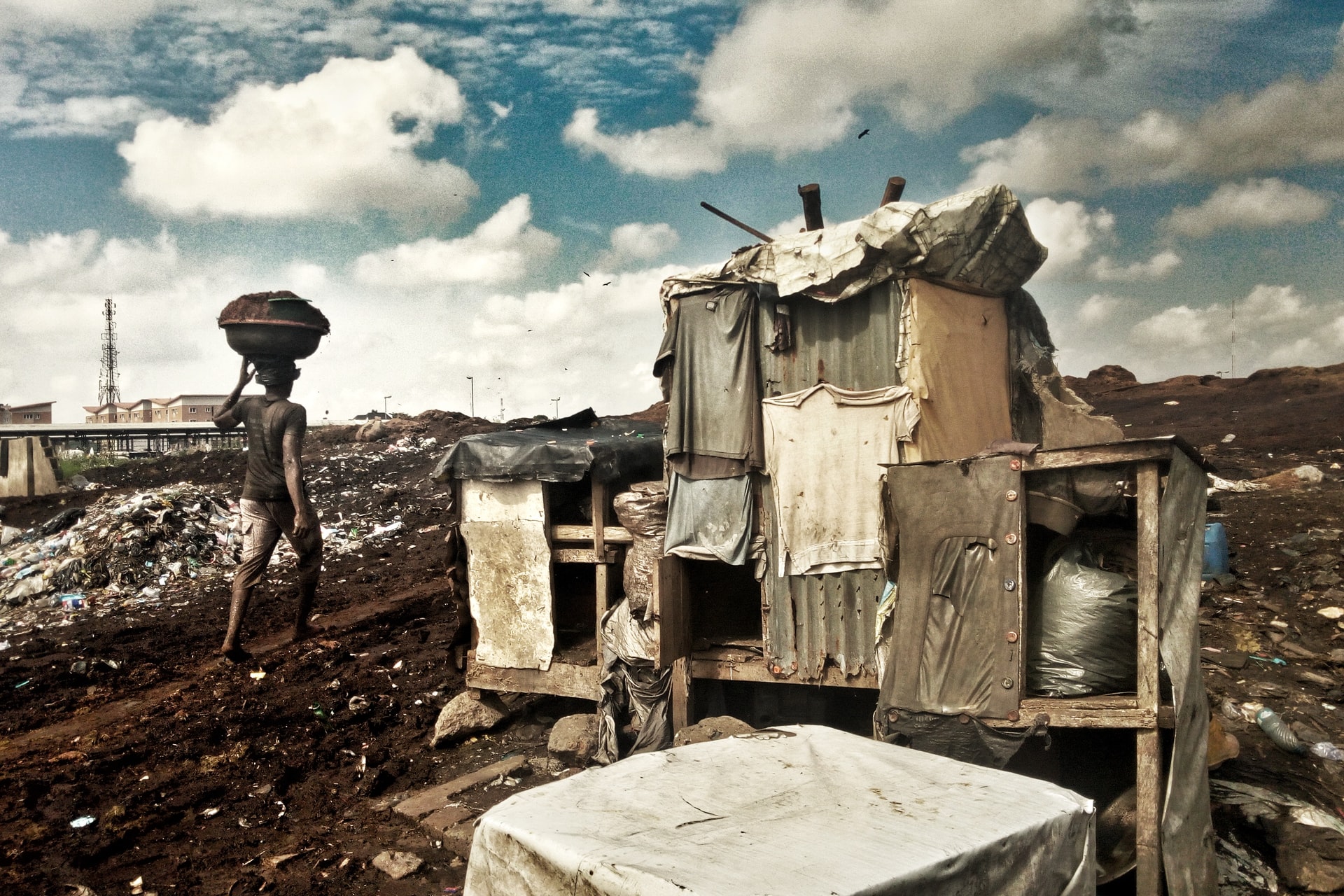
by DGR News Service | Jan 23, 2021 | Human Supremacy
by Cara Judea Alhadeff, PhD
Paintings in this post are by Micaela Amateau Amato from Zazu Dreams: Between the Scarab and the Dung Beetle, A Cautionary Fable for the Anthropocene Era.
The Master’s Tools Will Never Dismantle the Master’s House —Audre Lorde
As with our shift from our systemically racist culture to one rooted in mutual respect for multiplicity and difference, we must practice caution during our transition out of our global petroculture. This vigilance should not be based on the motivation, but on the underlying false assumptions and strategies that perceived sustainability and “alternative” agendas offer. The implicit assumptions embedded in the concept of sustainability maintains the status quo. At this juncture of geopolitical, ecological, social, and corporeal catastrophes, we must critically question clean/green solutions such as the erroneously-named Renewable Energies Revolution. I suggest we face both the roots and the implications of how perceived solutions to our climate crisis, like “renewable” energies, may unintentionally sustain ecological devastation and global wealth inequities, and actually divert us from establishing long-term, regenerative infrastructures.
On the surface, sustainability agendas appear to offer critical shifts toward an ecologically, economically, and ethically sound society, but there is much evidence to prove that #1: these structural changes must be accompanied by a psychological shift in individuals’ behavior to effectively shut down consumer-waste convenience culture; and, #2: the core of too many green/clean solutions is rooted in the very essence of our climate crisis: privatized, industrialized-corporate capitalism. For example, in his The Age of Disinformation1, Eric Cheyfitz alerts us: The Green New Deal is a “capitalist solution to a capitalist problem.” It claims to address the linked oppressions of wealth inequity and climate-crisis, yet its proposed solutions avoid the very roots of each crisis.
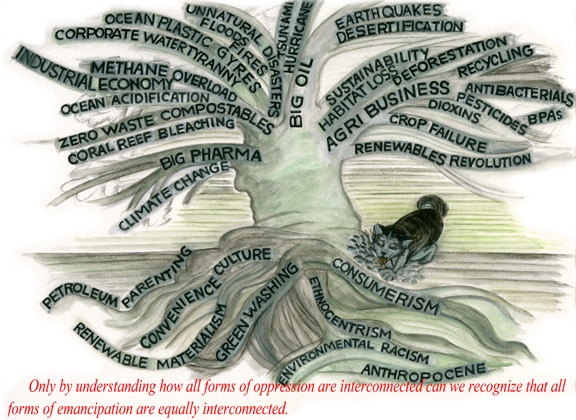
My challenge is rooted in three interrelated inquiries:
- How are our daily choices reinforcing the very racist systems we are questioning or even trying to dismantle?
- How are the alternatives to fossil-fuel economies and environmental racism reinforcing the very systems we are questioning or even trying to dismantle?
- What can we learn from indigenous philosophies and socialist ecofeminist movements in order to establish viable, sustainable, regenerative infrastructures—an Ecozoic Era?
As we transition to supposedly carbon-free electricity, we must be attentive to the ways in which we unconsciously manifest the very racist hegemonies we seek to dislodge; we must be cautious of the greening-of-capitalism that manifests as “green colonialism” through a new dependency on what is falsely identified as “renewable” energies. Currently, human and natural-world habitat destruction are implicit in the mass production and disposal infrastructures of most “renewable energies:” solar, wind, biomass/biofuels, geothermal, ethanol, hydrogen, nuclear, and other ostensible renewables2.
This includes our technocratic petroleum-pharmaceutical addictions that use technologies to create “sustainability.” Even if policy appears to be in alignment with environmental ethics, we are consistently finding that policy change simply replaces one hegemony, one cultural of domination, with another—particularly within the framework of neoliberal globalization. Only when we acknowledge the roots of our Western imperialist crisis, can we begin to decolonize and revitalize all peoples’ livelihoods and their environments.
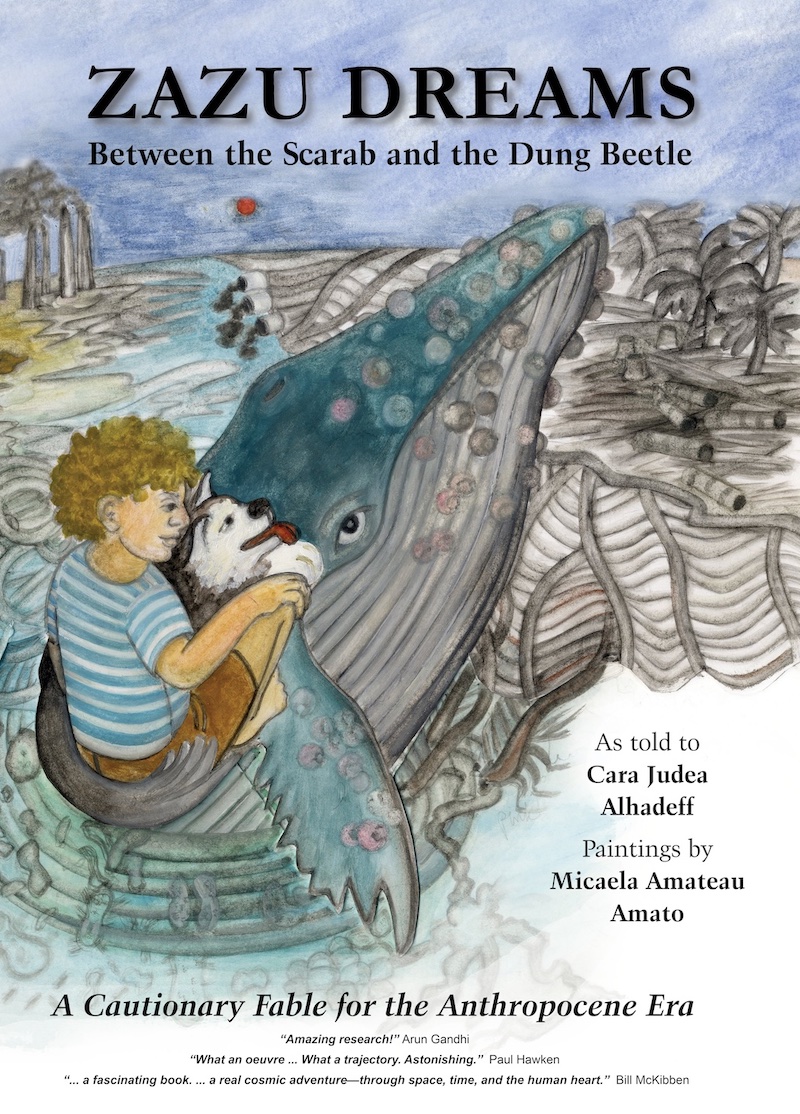
Zazu Dreams: Between the Scarab and the Dung Beetle, A Cautionary Fable for the Anthropocene Era3, my climate justice book that explores the perils of the Anthropocene, challenges cultural habits deeply embedded in our calamitous trajectory toward global ecological and cultural, ethnic collapse. The book’s main character reflects: “We have this crazy idea that anything ‘green’ is good—but we know that there is no clear-cut good and evil. What happens when the very solution causes more problems than the original problem it was supposed to fix?”
How we measure our ecological footprint4 and global biocapacity is often riddled with paradox—particularly in the face of green colonialism, or what I call humanitarian imperialism5. The litany of our collusion with corporate forms of domination is infinite within the Anthropocene Era (increasingly characterized as the Plasticene). Disinformation campaigns spread by fossil-fuel interests deeply root us in assimilationist consumerism. The Zazu Dreams’ characters witness social and environmental costs of subjugating others through both fossil-fuel-obsessed economies and their “green” replacements. Vaclav Smil warns us of this “Miasma of falsehood.” This implies replacing one destructive socializing norm—petro-pharma cultures sustained by fossil-fuel addicted economics—with another: purportedly “renewable” energies. These energies (I don’t call them renewable, because they are not “renewable” and not carbon-free)6, like fossil-fuels, are rooted in barbaric colonialist extractive industries. Once again, the “solution” is precisely the problem. Greenwashing is a prime example of the ways in which capitalism dictates our alleged freedom. Free market is a euphemism for economic terrorism. The “green economy has come to mean…the wholesale privatization of nature.”7 Consumerism becomes the default for making supposedly ethical choices.
In Deep Green Resistance, Lierre Keith urges us: “We can’t consume our way out of environmental collapse; consumption is the problem”. Even within the 99%, consumers are capitalism. Without convenience-culture/mass consumer-demand, the machine of the profit-driven free market would have to shift gears. We can’t blame oil companies without simultaneously implicating ourselves, holding our consumption-habits equally responsible. How can we insist government and transnational corporations be accountable, when we refuse to curb our buying, using, and disposal habits? We don’t have to go far back in our cross-cultural histories of nonviolent resistance and civil disobedience to learn from world-changing examples of strikes, unions, boycotts, expropriation, infrastructural sabotage, embargoes, and divestment protests.
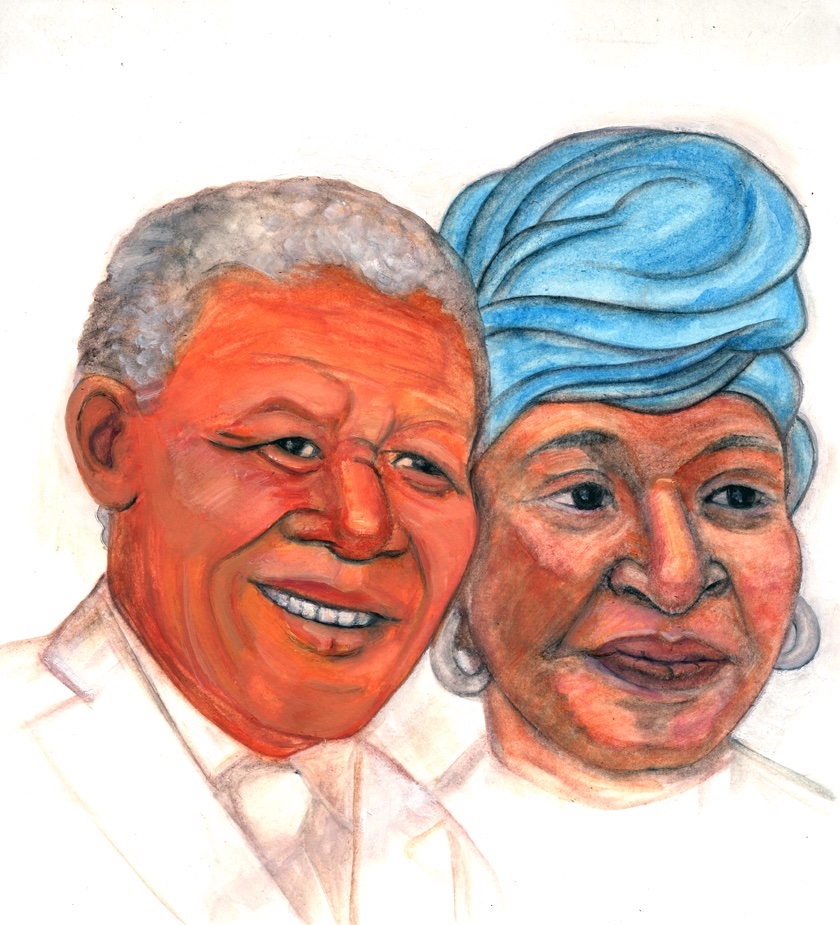
Yet, most contemporary transition movements are founded in the very system they are trying to dismantle. Our perceived resources, these alternative forms of energy proposed to power our public electrical grids, are misidentified under the misleading misnomers: labels such “renewable”/ “sustainable” / “clean”/ “green”. How is “clean” defined? For whom? There is not a clear division between clean energy and dirty energy/dirty power—clean isn’t always clean. Neoliberal denial of corporeal and global interrelationships instills conformist laws of conduct that continually replenish our toxic soup in which we all live. One perceived solution to help us transition is to create alternatives to fossil fuel-addicted economies, as proposed, for example, through The United States’ proposed Green New Deal and its focus on allegedly “renewable” energies. However well-intentioned, these supposed alternatives perpetuate the violence of wasteful behavior and destructive infrastructures. Even if temporarily abated, they ultimately conserve the original crisis.
Below I address specific technologies that are falsely identified as “renewable” energy; technologies that actually reinforce the very problem they are trying to solve.

1. Solar/Photovoltaic and Wind Technologies: Given the proposed solutions using industrial solar and wind harvesting, Western imperialism has and will continue to dominate global relations. “Clean energy” easily gets soiled when it is implemented on an industrial scale. Western imperialist practices are implicit in solar cell and storage production (mining and other extractive industries) and disposal infrastructures. Congruently, industrial wind farms—aka: “blenders in the sky,”(chopping up migrating birds & bats) use exorbitant resources to produce and implement (both the wind turbines and their infrastructure), and devastate migrating wildlife (bats and birds, critical to healthy ecosystems and some of whom are endangered species).
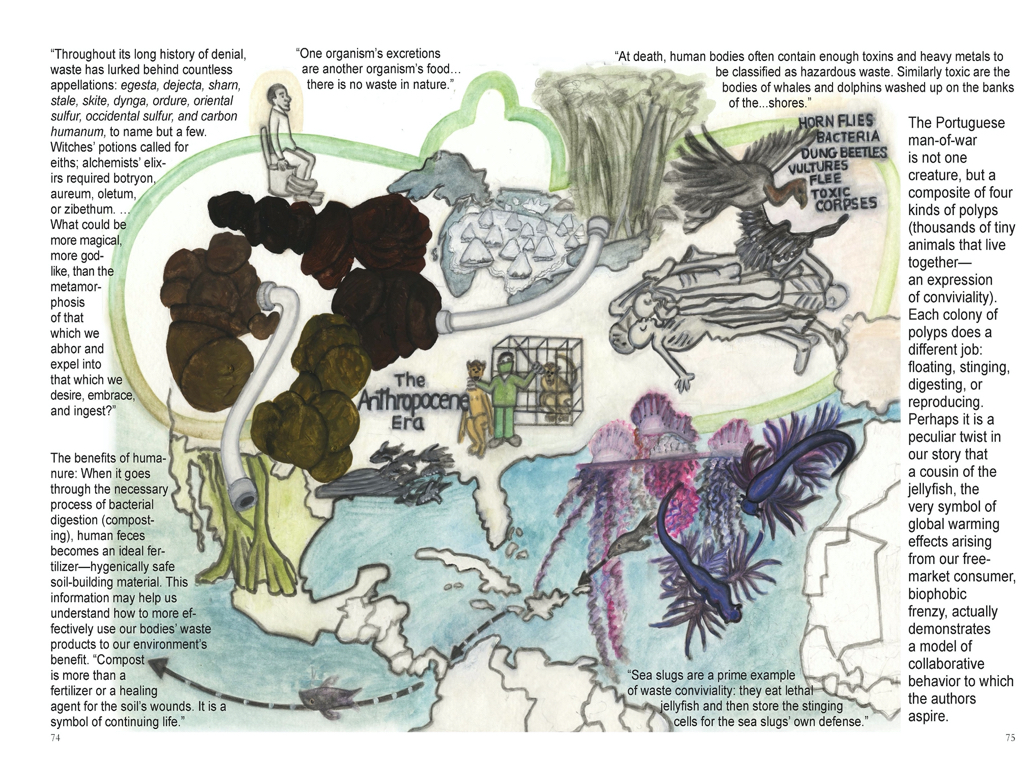
Both wind and solar energies require vast quantities of fossil fuels to implement them on a grand scale. As we have seen throughout both California and China (two examples among too many), massive solar-energy sites/solar industrial complexes strip land bare—displacing human populations and migration routes of both wildlife and people for acres of solar fields, substations, and access roads—all of which require incredibly carbon-intensive concrete. Consuming massive tracts of land, 100-1000 times more land area is required for wind and solar, as well as for biofuel energy production than does fossil-fuel production.
2. Hydro-Power Technology: Large-scale dams for hydro-power have also historically had cataclysmic effects on indigenous peoples and their lands. Although macro-hydro, like fracking, has
finally been recognized for its calamitous consequences, perversely, it is still proposed as a viable alternative to fossil-fuel economies.
3. Battery Technology: Let’s begin with a California-based scenario: According to the Union of Concerned Scientists and their Climate Vulnerability Index (CVI) in California, fine particulate pollution harms African-American communities 43% more than predominantly white communities, Latino 39% more, and Asian-American communities 21% more. As if tailpipe emissions are the only humanitarian catastrophe, one “clean solution” is the electric vehicle for public transportation and for personal consumption. Completely ignoring the embodied energy involved, this perceived solution displaces the costs of environmental racism—once again exported out of the US into the global south—in this case to Boliva where lithium (essential for battery production) is primarily mined. Cobalt, also essential to battery production, is mined in the Democratic Republic of the Congo. Like lithium, cobalt’s environmental and humanitarian costs are unconscionable—including habitat destruction, child slavery, and deaths. Eventually, production is followed by solar technology and battery e-waste dispersed throughout Asia, South America, and Africa. Additionally, rarely considered are the fossil-fuel sources used to supply the electricity for those private and public electric vehicles. And, of course most frequently, the poorest US populations work in and live near those coal mines/power plants/fracking stations.
The Renewable Energies Movement claims that our global addiction to oil (“black gold”) should be replaced by lithium (“white gold”). What we are not considering is that extracting lithium and converting it to a commercially viable form consumes copious quantities of water—drastically depleting availability for indigenous communities and wildlife, and produces toxic waste (that includes an already growing history of chemical leaks poisoning rivers, thus people and other animals). Paul Hawken‘s phrase “renewable materialism” counsels us that this hyper-idealized shift from a fossil-fuel paradigm to “renewable” energies is not a solution. Furthermore, these energies are LOW POWER DENSITY: they produce very little energy in proportion to the energy required to institutionalize them.
As the main character in Zazu Dreams prompts: “Even if we find great alternatives to fossil fuels, what if renewable energies become big business and just maintain our addiction to consumption? (…) Replacing tar sands or oil-drills or coal power plants with megalithic ‘green’ energy is not the solution—it just masks the original problem—confusing ‘freedom’ with free market and free enterprise”. We must now act on our knowledge that the renewable “revolution” is dangerously carbon intensive. And, as the authors of Deep Green Resistance caution us: “The new world of renewables will look exactly like the old in terms of exploitation.”
ENDNOTES
- Eric Cheyfitz, Age of Disinformation: The Collapse of Liberal Democracy in the United States. New York: Routledge, 2017.
- Surrogate band-aids that are frequently equal to or worse than what is being replaced include: bioplastics, phthalates replacements, and HFC’s. 1.Compostable disposables, also known as bioplastics, are most frequently produced from GMO-corn monoculture and “composted” in highly restricted environments that are inaccessible to the general public. Due to corn-crop monoculture practices that are dependent on agribusiness’s heavy use of pesticides and herbicides (for example, Monsanto’s Round-Up/glyphosate), compostable plastics are not a clean solution. Depending on their production practices, avocado pits may be a more sustainable alternative. But, the infrastructure and politics of actually “composting” these products are extraordinarily problematic. These not-so eco-friendly products rarely make it into the high temperatures needed for them to actually decompose. Additionally, their chemical compounds cause extreme damage to water, soil, and wildlife. They cause heavy acidification when they get into the water and eutrophication (lack of oxygen) when they leach nitrogen into the soil. 2.The trend to replace Bisphenol A (BPA) led to even more debilitating phthalates in products. 3.Lastly, we now know that hydrofluorocarbons (HFCs), “ozone-friendly” replacements, are equally environmentally destructive as chlorofluorocarbons (CFCs).
- Cara Judea Alhadeff, Zazu Dreams: Between the Scarab and the Dung Beetle, A Cautionary Fable for the Anthropocene Era. Berlin: Eifrig Publishing, 2017.
- The term “carbon footprint” was actually normalized through shame-propaganda by BP’s advertising campaigns. “The carbon footprint sham: A ‘successful, deceptive’ PR campaign,” Mark Kaufman, https://mashable.com/feature/carbon-footprint-pr-campaign-sham/
- Under the guise of the common good and universal values, humanitarian imperialism has emerged as a neo-colonialist method of reproducing the unquestioned status quo of industrialized, “First World” nations. For a detailed deracination of these fantasies (for example, taken-for-granted concepts of equality, poverty, standard of living), see Wolfgang Sachs’ anthology, The Development Dictionary: A Guide to Knowledge as Power. Although the term humanitarian imperialism is not explicitly used, all of the authors explore the hierarchical, ethnocentric assumptions rooted in development politics and unexamined paradigms of Progress. As public intellectuals committed to the archeology of prohibition and power distribution, we must extend this discussion beyond the context of international development politics and investigate how these normalized tyrannies thrive in our own backyard.
- The air and sun are renewable, but giant wind and solar installations are not.
- Jeff Conant, “The Dark Side of the ‘Green Economy,’” Yes! Magazine, August 2012, 63.
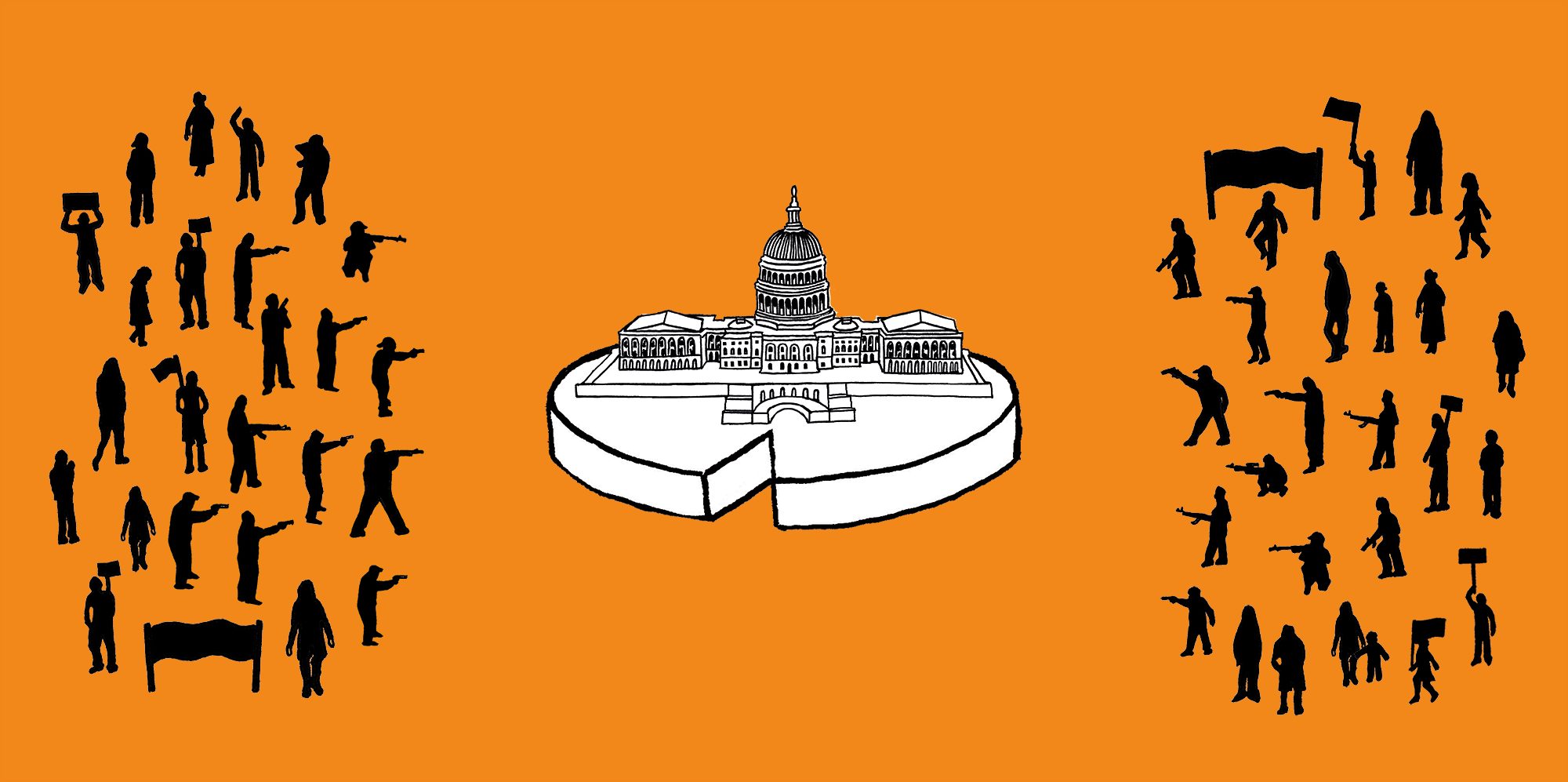
by DGR News Service | Dec 28, 2020 | Repression at Home
In the concluding part of this three part series we are offered a stark reminder of the scale of greed and corruption involved in the drugs trade, a clear analysis of the impact on poverty and a reading recommendations!
By Russell “Maroon” Shoatz/4StruggleMag
Peep the Game
South Amerikan cocaine replaced French Connection and CIA controlled Southeast Asian/Golden Triangle-grown heroin as the drug of choice in the early 1980’s. Remember Miami Vice? Well, as might be expected, this country’s government, intelligence agencies and large banks immediately began a struggle to control this new trade. Remember: control-not get rid of-in complete contrast to their lying propaganda projects like the War on Drugs! Thus, they were in fact dealing with-not fighting-the South Amerikan governments, militaries and large landowners who controlled the raising, processing and shipping of the cocaine. (For a few years, however, the latter themselves had to battle a few independent drug lords, most notably Pablo Escobar Ochoa and his Medellin Cartel).
In this country at that time the youth gangs had next to nothing to do with the cocaine trade, which was then primarily servicing a middle and upper class-and white-clientele. The traffic employed a few old-school big time hustlers along with some Spanish-speaking wholesalers, who also had their own crews to handle matters. Although after the fact, the Hip hop cult movie favorites Scarface and New Jack City are good descriptions of that period, albeit they both-purposely-left out the dominant role that the U.S. government and intelligence agencies played in controlling things. All right, I know you’re down with all of that-and love it!
So let’s move on.
In the middle 1980’s the U.S. began backing a secret war designed to overthrow the revolutionary Sandinista government that had fought a long and bloody civil war to rid Nicaragua of its U.S.-sponsored dictator (Somoza) in 1979. But after being exposed to the world, the U.S. Congress forbade then-president Reagan from continuing this secret war. Like a lot of U.S. presidents, however, he just ignored Congress and had the CIA raise the money, recruit the mercenaries and buy or steal the military equipment to continue the war. Consequently, that’s how and why crack and the mayhem it’s caused came upon us. Here, however, you won’t see Hollywood and TV giving up the raw. With few exceptions like Black director Bill Dukes’ ‘Deep Cover’, starring Laurence Fishburn, and ‘Above the Law’ with Steven Segal, you have to search hard to see it portrayed so clearly. Later I’ll explain why.
Anyway, most people have heard that crack was dumped into South Central Los Angeles in the mid-’80’s-along with an arsenal of military-style assault rifles that would make a First Wave BPP member ashamed of how poorly equipped s/he was. Needless to say, the huge profits from the crack sales, coupled with everyone being financially strapped, magnified the body count! And, since crack was also so easy to manufacture locally and so dirt cheap, just about anybody in the hood could get into the business. Gone were the old days of a few big-time hustlers, except on the wholesale level.
But, make no mistake about it, the wholesale cocaine sold for the production of crack was fully controlled and distributed by selected CIA-controlled operatives.
So, to all of you dawgs who have been bragging about how big you are/were, a top-to-bottom organization chart would in fact look something like this:
- At the top would be the president: Ronald Reagan;
- then former CIA director George Bush, Sr.;
- the National Security Advisor;
- Secretary of State;
- major banking executives;
- Colonel Oliver North;
- General Secord;
- arms dealers;
- mercenary pilots;
- South and Central Amerikan government and military leaders, including Escobar and the Medellin Cartel originally;
- U.S. Navy, Coast Guard, Customs and Border Patrol officers;
- state and local police, and county sheriffs and their deputies, and their successors in office;
- and at the bottom of the barrel: YOU DAWG!
Now I know that you already knew in your hearts that there were some big dawgs over you, but I bet you never imagined the game came straight out of the White House, or that you were straight up pawns on the board. If that sounds too wild, then tell me why it’s harder to find any government, CIA, military or bankers, like George Bush, Sr., and his crew, in prison, than it is to win the lottery? Yeah, they double-crossed Noriega, Escobar and the Medellin Cartel, and made Oliver North do some community service, but that’s all. The real crime lords-the government, military, CIA and banking dons-all got away. Finally, and only after Congresswoman Maxine Waters made a stink about it, was the CIA forced to do two investigations and post on its official website their findings together with an admission of being a drug dealer.
Naw dawg, y’all were played! Face it.
That’s what happened to you O.G.’s from the ’80’s. But as Morpheus said in The Matrix, let me “show you how deep the rabbit hole goes”. Gradually the U.S. government was forced to crack down on the cocaine coming through Florida, but by then the South Amerikan cartels and their government and military allies had found new routes through Mexico. At first the the members of the Mexican underworld were just middlemen; but quickly recognizing a golden opportunity, they essentially seized control of most of the trade between South Amerika and the U.S.They forced the South Amerikans into becoming junior partners who were responsible only for growing and processing, the cheaper the better. The Mexicans now purchased mountains of cocaine for transshipment and smuggling into the U.S. wholesale market, resulting in oil and automotive industry-type profits.
One might wonder why the South Amerikans-powerful players would go for a deal like that. As ever the answers can found in the Machiavellian and serpentine maneuverings of the United States government and its poor Mexican counterpart. You see, in the 1980’s the Mexican government was overseeing an economy that was so bad, that for all practical purposes, it was bankrupt. Indeed, the U.S. and and its underlings in the International Monetary Fund (IMF) and the World Bank (WB) were forced periodically to give the Mexican government millions upon millions in loans, in return for unfair trading concessions, in order to prop it up with the economy.
The U.S. was then and is now extremely vulnerable to conditions in Mexico:
because common sense and past experience has told its rulers that the worse things became in Mexico, the more conditions would force its already dirt poor majority to find a way to enter the U.S. to find a means to feed themselves and their families. And the U.S. could not keep prevailing upon the IMF and WB to lend Mexico more money-especially since the U.S. ruling classes saw another way temporarily to plug up the hole in their control of matters in the international financial world. Thus, another unholy alliance was formed. This one was between the U.S. government, CIA, State Department, banks, and the other usual suspects on one side; and their Mexican counterparts-including their first fledgling cartels-on the other, with the South Amerikans now in a junior partnership role.
However, I don’t want to give the impression that it was arranged diplomatically, all neat and tidy. Far from that! No, it evolved through visionaries amongst the usual suspects, putting their ideas before other select insiders and working to craft an unwritten consensus. It was the same way that they along with Cuban exiles in Florida-had used the earlier cocaine trade to fuel the growth around Miami. Only this time it would be Mexico, a much more pressing and unstable situation. It was recognized by all parties that Mexico’s underworld would eventually land in the driver’s seat due to its ability to take the kind of risks called for, its geographical proximity to the U.S. border and, most important, its strong desire to avoid confronting the U.S. and Mexican governments as Pablo Escobar had done.
Mexican Underworld
Thus, the members of the Mexican underworld were more than willing to guarantee that most of their drug profits would be pumped back into the moribund Mexican economy through large building projects, upgrading the tourist industry, big-time farming and other clearly national ventures. And, on the messy side, their gunmen were becoming experts at making reluctant parties fall into line by offering them a stark choice between gold or lead. Nevertheless, avoid thinking that the Mexican and South Amerikan underworld ever became anything but hired hands of the big dawgs in the United States government and their partners in the banking industry, who always remained in a position to destroy their underlings’ smuggling and money laundering operations through tighter control of U.S. borders and/or by making it extremely difficult to launder the mountains of small-denomination bills which the traffickers had to deal with.
In fact, that’s what happened when then-president George Bush, Sr., ordered the invasion of Panama, which was/is a major offshore money laundering hub, after hired hand Gen. Manuel Noriega had become unruly in 1989. Plus, these hired hands would insure that their chosen corrupt politicians would always win in Mexico’s elections by distributing the planeloads of money that the South Amerikan gangsters and government/military partners would make available as overhead. But more important for the United States, a major part of the proceeds would be pumped into the Mexican economy in order to forestall the looming bankruptcy.
Consequently by the middle 1990’s the Mexican underworld had established the superpowerful Gulf, Juarez, Guadalajara, Sinaloa and Tijuana cartels. Moreover, the underworld had consolidated its power by not only controlling who all were elected to key political posts in Mexico, but had also perfected the art of bribing key local, state and regional police heads as well as strategic generals in Mexico’s armed forces. Check out the movies Traffic, Once Upon a Time in Mexico, and Antonio Banderas/Selma Hayek’s Desperado. Once again, after the fact, you’ll see Hollywood making money by spilling the beans. But you should not let the stunt work lull you into thinking there’s no substance to the plots!
Remember: Mexico’s cartels wouldn’t be able to function without the collaboration and protection from the highest levels within the U.S. establishment.
Just as the CIA has openly admitted it was a drug merchant during an earlier period, you can believe nothing has changed-except partners! The hilarious part is that none of the wannabe real gangstas in the U.S. know that in reality they’re low-paid, low level CIA flunkies without pensions or benefits; or they can’t wait until they get out of prison to become undercover government agents-slingin’ crack. Alas, most people think it’s crazy to believe that the government of the U.S. would allow its cities and small towns to be flooded with cocaine from South Amerika. Even the wannabe gangstas don’t really believe that. They prefer to think that such ideas are good for conspiracy junkies and cling to the illusion that they are more than just pawns on the chessboard.
Further, if one does not get beyond the idea that this whole thing was just a plot to destroy the Black and Brown peoples-a favorite, though shortsighted theory-there’s no way to see just how deep the drug game really is. I repeat: the main objective was to pump billions of dollars into the Mexican economy in oder to avoid a complete meltdown and the subsequent fleeing to the U.S. of sixty or more million Mexicans out of its ninetyplus million inhabitants. This would have been a crisis that would have dwarfed the numbers who are just beginning to make their presence known!
Actually, the big dawgs in the U.S. probably didn’t know just how they were gonna control the fallout that would inevitably accompany their cocaine/crack tax. They routinely tax alcohol, gambling (from the lotteries to the casinos), and even prostitution in certain areas, don’t they? So yeah, it was a clandestine operation to use cocaine to rescue Mexico and stave off an economically induced invasion of the U.S. by its destitute populace.
The Mexican people, especially its Indigenous population, were made poverty-stricken by 500 years of colonialism, slavery, peonage, neo-colonialism and the theft of one-third of their country by the United States in the 19th century.
Sadly, though, our First Wave’s degeneration into the glamorization of gangsterism, the Second Wave’s hunger for respect and recognition that was fueling the senseless gang carnage, the Hip Hop generation’s ability to provide the youth with vicarious fantasies to indulge their senses with the hypnotic allure of the temporary power that the drug game could bring them-led the youth in the United States back to emulating the First Wave’s Superfly and Scarface days. Others also see that: My theory is that nine times out of ten, if there’s a depression, more a social depression than anything, it brings out the best art in Black people. The best example is Reagan and Bush gave us the best years of hip hop…Hip hop is created thanks to the conditions that crack set: easy money but a lot of work, the violence involved, the stories it produced-crack helped birth hip hop.
Now, I’m part conspiracy theorist because you can’t develop something that dangerous and it not be planned. I don’t think crack happened by accident…Crack offered a lot of money to the inner city youth who didn’t have to go to college. Which enabled them to become businessmen. It also turned us into marksmen. It also turned us comatose. (Ahmir Thompson, aka Quest Love, “The Believer”, in Never Drank the Kool-Aid, op. cit.; also, “The Believer-Interview with Ahmir Thompson“). With the deft moves of a conjurer, the big dawgs in the U.S. seized upon all of this and began to nudge these elements around on the international chess board-within their giant con game. Moreover, these big dawgs in the United States had very little choice where to start their triage in order to gain some relief from their manufactured domestic crisis.
I’ll tell you why.
Cocaine in its powder and crack forms is so addictive that the cultures that use them regularly-the rich and famous, the Hollywood Set, corporate executives, lawyers, doctors, weekenders, entertainers, athletes, college kids, suburbanites, hoodrats, hustlers, pipers, etc.-bring a guaranteed demand! In most ways, it could be argued, the effect has been the same as with alcohol and tobacco, which have never been successfully suppressed in the U.S. It follows then that despite all of their propaganda about Just Say No and the bogus War on Drugs, the big dawgs never had any intention of even trying to eradicate the use of cocaine. In fact, crack had turned their lower class neighborhoods into lucrative mainstays of the big dawgs’ alternative taxing scheme At the same time, however, the Black and Brown communities were becoming major headaches that if left unchecked could eventually evolve into a real strategic threat!
In contrast to the relatively tranquil non-Black/Brown communities, which used more, mostly powder, cocaine, the trade in the Black and Brown hoods and barrios was accompainied by an exponential increase of drug-related violence especially after the gangs got seriously involved. Now, as I’ve pointed out, the gangs were mainly just pursuing respect prior to getting involved with hustling drugs. And the carnage connected to that was not a real concern to the big dawgs. But the crack/cocaine trade was different from the earlier dumping of heroin in those communities which was accompanied by the comparatively isolated violence of the Black Mafia-style groups. That violence, though terrifying, was also more selective. The more widespread availability of crack and assault weapons led the big dawgs to understand that if they didn’t aggressively deal with the ultra-violent inner city drug gangs, the latter would eventually move to consolidate their gains by forming South Amerikan and Mexican-style cartels. Afterward, they, like their Mexican forerunners, could gradually take over inner city politics for themselves once they realized that the money and power would not of themselves provide them with the kind of respect and dignity they sought.
To understand why not, just observe the rich and famous hip hop artists who continue to wild-out because they sitll lack the respect and dignity that comes with struggling for something other than money or power: in short, some type of (political or higher) cause.
Anyway, the hip hop generational favorite TV drama The Wire lays out the entire phenomenon pretty much as it had earlier played itself out in Baltimore and other urban areas. In fact, the fictional TV series derives its realness from an earlier long-running expose featured in a Baltimore newspaper (another after the fact but still useful piece of work to study). Indeed, the parts of that show which depict earlier years of the Black gangs getting deep into the crack trade clearly illustrate my points about the gangs evolving into proto-cartels-and then being triaged before maturing into real strategic threats, thereby leaving the crack trade intact.
It was set up as a tool to neutralize the Second Wave before its members woke up to the fact that, despite their money and power they were being used: played like suckers, a rub that the more astute big dawgs feared that money would not soothe. Thus, all of your draconian gun-related and mandatory sentencing laws were first formulated on the federal level, where most of the big dawgs have their power, and then forced upon most of the states. This was to insure that the Second Wave would never be able to consolidate any real power. Precisely because the latter were proving themselves to be such ruthless gangstas, in imitation of their Hollywood idols, coupled with the power they derived from their share of the undercover tax being extracted from their communities, the ruling classes took the position that they should be triaged before they got too big, a period which averaged from one to three years in a run, and that everything they acquired should be taken.
The martyred hip hop icon The Notorious B.I.G. put it all together in his classic song, rightly titled Respect:
Put the drugs on the shelf/Nah, I couldn’t see it/Scarface, King of New York/I wanna be it…Until I got incarcerated/kinda scary…Not able to move behind the steel gate/Time to contemplate/Damn, where did I fail?/All the money I stacked was all the money for bail. (“Biggie Smalls”, The New York Times,1994, in Never Drank the Kool-Aid, op. cit.)
Let’s get another thing straight!-like the angle that continues to have shortsighted individuals chasing ghosts about why powder cocaine and crack are treated so differently. In the big dawgs’ calculations, there is no reason to punish harshly the powder cocaine dealers and users in the same manner as the crack crowd.
Racism has not been the driving motive; rather it was the armed threat posed by these proto-cartels!
The big dawgs witnessed a clear example of what might come by way of the Jamaican Posses that cropped up in the Black communities. These young men from the Jamaican and Caribbean diaspora were also a consequensce of the degeneration of those regions’ lower classes’ attempts to throw off the economic and social effects of their former slavery and colonial oppression. Led by the socialist Michael Manley and inspired by the revolutionary music of Bob Nesta Marley (which can be glimpsed in the later movies, Marked for Death with Steven Segal, and Belly with DMX and Nas), the Jamaican Posses were the Black Mafia on steroids! Moreover, despite their quasi-religious nationalism and their ability to operate with heavily armed soldiers in the U.S. and the Caribbean, their ten thousand or so members were nothing compared to the hundreds of thousands in the wings of the Black and Brown communities!
The cry from the big dawgs’ mouthpieces in Congress was about the gunplay, not so much the drugs. What was not said, however, was the big dawgs’ anxieties about stopping these gunslingers before they got over their mental blocks about using their weapons against the police-or the system. Stop them while they’re hung up on imitating their Hollywood and Euro-Mafia icons who made a mantra out of not using their weapons against the police. Indeed, with a few exceptions, the Second Wave allowed itself to be disarmed and carted off to prison like pussycats! In addition, to appease some of the conservative segments in the U.S. which were upset about capitalism’s globalization drive, the big dawgs dangled the prospect of thousands of new jobs for the rural communities which were being destroyed by it (hence, the Prison Industrial Complex and its neo-slavery).
Therefore, we must struggle against the shortsighted idea that racism alone is the driving motive which has fueled the construction of the Prison Industrial Complex. Instead, if you do a follow-up and add your own research, you’ll be able to document the who, when, where and how the big dawgs set everything in motion; as well as how they continue to use us as pawns in their giant international con game.
Conclusion, ask yourself the following questions:
1. How can we salvage anything from how the people of the First and Second Waves allowed their search for respect and dignity to degenerate into gangsterism?
2. In what ways can we help the Next Wave avoid our mistakes?
3. What can we do to contribute to documenting who the real
big dawgs are behind the drug trade?
4. Why have they never been held accountable?
5. How come our families and communities have been the only ones to suffer?
6. How can we overcome our brainwashing?
7. How can we truly gain respect and dignity?
8. In what ways can we atone for our wrongs and redeem ourselves, families, and communities?
9. What are some ways to fight for restitution and reparations for all of those harmed by the government-imposed undercover drug tax?
10. How can we overturn the 13th Amendment of the U.S. Constitution and finally abolish legal slavery in the U.S.?
Once you answer those questions and begin to move to materialize your conclusions, then you will have made the choice between Liberation or Gangsterism: Freedom or Slavery.
By way of references here is a list of recommended reading:
1. The Wretched of the Earth, by Frantz Fanon
2. We Want Freedom, by Mumia Abu Jamal
3. Assata: An Autobiography, Assata Shakur
4. A Taste of Power: A Black Woman’s Story, by Elaine Brown
5. Blood in My Eye, by George Jackson
6. We Are Our Own Liberators: On The BLA, by J. A. Muntaquim
7. Liberation, Imagination & the Black Panther Party, by Kathleen Cleaver & G. Katificas
8. Black Brothers, Inc.: The Violent Rise and Fall of Philadelphia’s Black Mafia
9. Monster: The Autobiography of a L.A. Gang Member, by Sanyika Shakur (From gangster into liberator)
10. Dark Alliance, by Gary Webb (documents how the CIA introduced crack into the U.S.)
11. Lost History, by Robert Parry (an even more in-depth expose of the CIA and cocaine)
12. Down by the River: Drugs, Money, Murder and Family, Charles Bowden (the U.S. and Mexican governments’ partnership with the drug cartels)
13. Inspector General’s First and Final Reports on Iran-Contra and the Illegal Drug Trade, posted on the CIA’s official website (the U.S. government’s admissions about its dealing drugs)
15. Beyond Smoke and Mirrors: Mexican Immigration, by D. S.
Hassey, Jorge Durand and Nolan J. Malone (how the Mexican
economy collapsed while the Drug Enforcement
Administration admitted that 85% of the drugs shipped from
Mexico got across the U.S. border-with no action taken)
Original artwork was created for this piece by Siri: thank you!
















